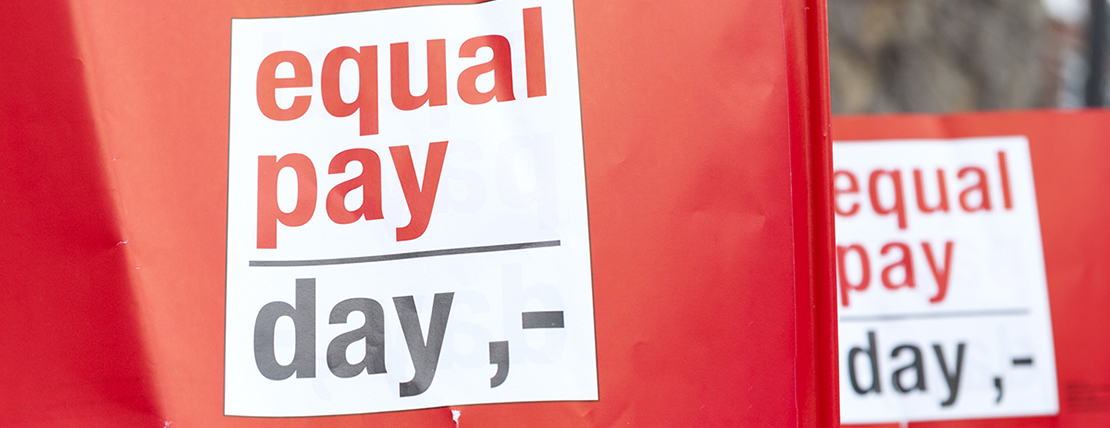- Stagnated progress. A Pew Research Center analysis of median hourly earnings of full- and part-time workers revealed that the gender pay gap has closed by only 2 percentage points since 2002.
- Employee sentiment. A report from beqom found that 51% of employees think their workplace has an issue with gender pay gaps.
- The role of transparency. More states and localities are enacting pay transparency laws in the U.S., which experts and data suggests will lead to increased pay equity over time.
- More women in leadership. Proponents of pay equity believe that placing more women in leadership positions is one of the keys to progress in closing the pay gap.
After significant improvements during the 1980s and 1990s, progress in closing the gender pay gap has mostly stagnated the past 20 years.
According to a new Pew Research Center analysis of median hourly earnings of full- and part-time workers, women made 82 cents for every $1 for men in 2022 as the pay gap closed only 2 percentage points since 2002.
Though Pew’s data indicate the gap is less exaggerated among younger workers — 8 cents on the dollar for workers ages 25 to 34 — the overall picture illuminates a persistent problem that has yet to be alleviated through various company initiatives and legal measures.
Although a significant gender pay gap remains, it’s not a problem that has been buried. There has been significant coverage and visibility on the topic, including a dedicated day — Equal Pay Day, which this year is March 14, 2023 — to acknowledge how far into 2023 women have to work to make as much as men did in 2022.
However, U.S. workers still believe employers have plenty of work to do to fix the problem at an organizational level.
About half of employees surveyed (51%) think their workplace has an issue with gender pay gaps, according to a report from beqom — an increase of 121% since 2019. The report also revealed that less than half of respondents (43%) think their employer's actions to mitigate the difference are effective.
A deeper look at Pew’s wage data reveals significant differences across race as well. Asian-American women earn 93 cents for /$1 men make; White women, 83 cents; Black women, 70 cents; and Hispanic women, 65 cents.
Lack of Progress
There are many factors contributing to the gender pay gap, including differences in industries or jobs worked, years of experience and hours worked, which is why organizations are increasingly taking more action on pay equity.
Public- and private-sector employers are committing to pay transparency and closing the gender pay gap, but progress is still slow.
Some states have laws regarding pay transparency to assist in closing the pay gaps. Colorado and California were among the first states to pass pay transparency laws that require companies to add pay ranges to job postings. Other states and municipalities, such as New York City, have similar versions of those laws that went into effect in 2023.
Many experts believe increased pay transparency will lead to increased pay equity and early data supports this notion. A study published in 2022 by the University of Utah examined the salaries of 100,000 academics over a decade and found that increased transparency led to a 20% decline in gender pay inequity.
“Pay transparency is as important as raising awareness around the pay gap, but it goes beyond your salary,” said Tanya Jansen, co-founder of beqom, a total rewards management software company. “Employees don't understand how they're paid; we typically only see our salary. Employers need to educate employees on understanding what compensation means, so we have true pay transparency when comparing apples to apples.”
This includes understanding what you're getting paid, how it links to your job performance and how it's comparable to peers, Jansen added.
“Also, understand your non-cash rewards and benefits,” she said. “All of it must be considered to understand the rewards package fully.”
And employees agree that national pay transparency legislation is needed. According to the beqom survey, 73% of respondents want to see a nationwide change to transparency, and 58% think there should be a law mandating companies disclose their gender pay discrepancies.
Women in Leadership
Along with equal pay, women are seeking more money, flexibility and career promotion. According to a survey of 1,600 working women by global HR consulting company Robert Half, 75% want a salary increase, 34% seek more flexibility to choose where and when they work and 29% want a promotion by the end of 2023.
Proponents of pay equity believe that placing more women in leadership positions is one of the keys to progress, but that might be too simple of a solution, particularly if companies use it as a Band-Aid.
“Employers need to ensure women are targeted in their recruitment efforts, and there's diversity to ensure women have the opportunity to progress,” Jansen said. “[They should ensure they] have the right skills/mix of skills and the right promotion opportunities, so there's a diverse pool of people. This requires them to look deeper instead of taking the opposite approach."
While there is no simple fix to closing the gender pay gap, and nuance is required in discussing it, incremental gains start with employers practicing fair pay and promotional practices across gender and race.
Editor's Note: Additional Content
For more information and resources related to this article see the pages below, which offer quick access to all WorldatWork content on these topics:







